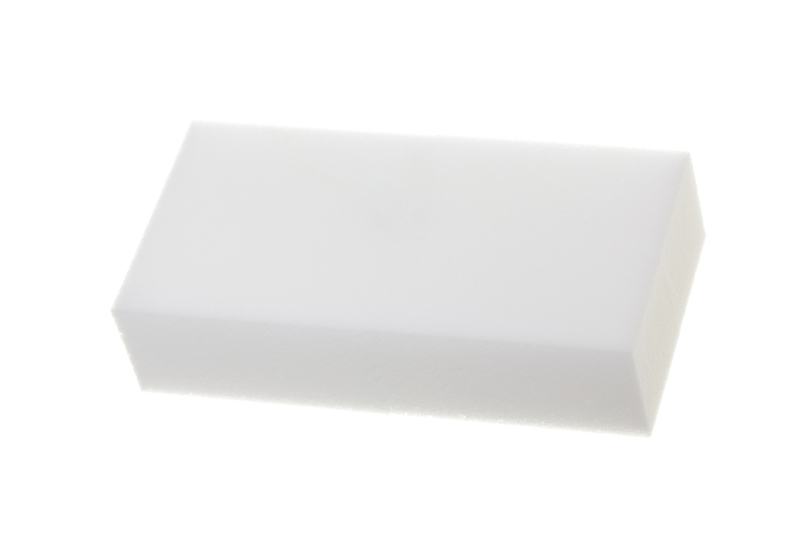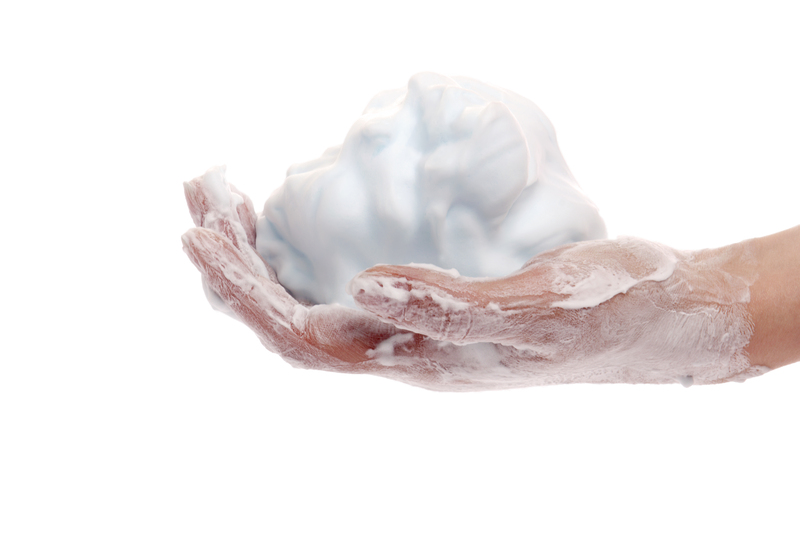Uncover the Secret to Removing Pesky Burnt-on Residue from Your Stovetop
Posted on 12/09/2025
Uncover the Secret to Removing Pesky Burnt-on Residue from Your Stovetop
Are you frustrated by stubborn burnt-on stains and residue on your stovetop? Stovetop messes are not only unsightly but can also disrupt your cooking experience and make your kitchen feel less inviting. But don't worry--there are effective, practical solutions to restore your stovetop's shine and cleanliness! If you want to know how to remove burnt-on residue from your stove, safeguard your appliance, and keep your kitchen sparkling, you've come to the right place.
Why Burnt-on Residue Happens and Why It's So Difficult to Remove
Stovetops are the heart of most kitchens--where delicious meals come to life. However, spills, overflows, and high-heat cooking often result in food splatters and spills that quickly become burnt-on residue. Over time, burnt-on grime hardens, making it nearly impossible to wipe away using traditional cleaning methods.
- Sugar-based spills (from jams, sauces, or desserts) caramelize and fuse onto stovetop surfaces.
- Grease and oil splatters can cook onto the enamel, glass, or stainless steel.
- Dairy products and starchy pasta water can create an especially tough film.
The heat from repeated cooking further bakes on the residue, making it more resistant to standard cleaners. Moreover, persistent burnt-on gunk can lead to discoloration and damage if not properly addressed.

The Secret Weapons: Essential Supplies for Stovetop Deep Cleaning
To effectively tackle burnt-on gunk, you'll need more than just elbow grease. Prepare the following tools and cleaners for the job:
- White vinegar: Its mild acidity breaks down mineral deposits and food residue.
- Baking soda: Acts as a gentle abrasive to lift stubborn messes.
- Dish soap: Cuts through grease and grime.
- Razor blade scraper or plastic scraper: Lifts off stuck-on bits from glass or ceramic surfaces (use with caution!).
- Non-scratch scrub pads: Removes stains without damaging the finish.
- Microfiber cloths: For wiping, buffing and a streak-free finish.
- Old toothbrush: Helps get into crevices and around burners.
- Hydrogen peroxide (optional): Boosts burnt-on residue removal for tough stains.
- Gloves: Protects your hands.
Note: Always check your stovetop manufacturer's instructions for safe cleaning practices and avoid using harsh scouring pads on delicate surfaces.
How to Remove Burnt-on Residue from Your Stovetop: Step-by-Step
Step 1: Safety First
Before you start scrubbing, make sure your stovetop is fully cool and the burners are turned off. Remove grates, burner covers, and any removable knobs. Place them in soapy water to soak.
Step 2: Loosen the Burnt-on Gunk
Pour a generous amount of hot soapy water over the burnt surface. Allow it to sit for 5-10 minutes. This helps soften and loosen the residue, making it easier to scrub away.
Step 3: Use Baking Soda and Vinegar for a Deep Clean
- Sprinkle a thick layer of baking soda over the burnt areas.
- Pour white vinegar slowly over the baking soda. The mixture will fizz, helping to penetrate grime.
- Let the solution sit for 10-15 minutes to work its magic.
The chemical reaction between baking soda and vinegar is the real secret to loosening stubborn residues. It breaks down hardened gunk without scratching sensitive stove surfaces.
Step 4: Scrub Safely Without Scratching
- Using a non-scratch scrubbing pad, gently work the baking soda paste over the stain in circular motions.
- For tight spots or caked-on edges, grab your old toothbrush and scrub gently.
- If residue persists, use a plastic scraper or (if your stove is glass or ceramic and the manufacturer allows) a razor scraper held at a shallow angle. Carefully slide it under the burnt bits.
Avoid steel wool or abrasive metal pads as these may permanently damage your stovetop's delicate surface!
Step 5: Rinse and Repeat if Necessary
Wipe away the paste and dissolved residue with a wet microfiber cloth. If any burnt-on deposits remain, repeat the steps above until the spot is clear. For especially tough stains, try this bonus technique:
- Mix a thick paste of baking soda and hydrogen peroxide. Spread over the stubborn area and let sit for 20 minutes, then scrub and wipe clean.
Cleaning Different Types of Stovetops
There are several kinds of stovetops, and each requires specific care to avoid damage. Here's how to tackle burnt-on residue for every surface:
How to Clean Gas Burner Stovetops
- Remove grates and burner caps, and soak them in hot soapy water for 15-20 minutes.
- Scrub with a non-scratch pad or old toothbrush to remove any carbon or grease.
- For stubborn burnt marks, scrub gently with a paste of baking soda and water.
Wipe down the stovetop surface with the vinegar and baking soda technique, focusing on difficult spots. Dry all parts thoroughly before reassembling.
How to Clean Glass or Ceramic Stovetops
- Never use abrasive scrubbing pads or powders.
- Use a razor scraper held flat against the glass to slide off burnt-on food.
- Follow with the baking soda and vinegar deep clean, then rinse.
Buff the surface with a microfiber cloth for a streak-free, polished finish.
How to Clean Electric Coil Stovetops
- Unplug or turn off power before handling coils.
- Remove the coils and drip pans; clean drips pans with hot soapy water, scrubbing away any baked-on gunk.
- Wipe the stove surface with vinegar and baking soda, then dry and reassemble.
How to Clean Stainless Steel Stovetops
- Use the baking soda and vinegar paste, but rub gently to avoid scratching.
- Always scrub in the direction of the stainless steel grain.
- Rinse thoroughly and buff dry to prevent water spots and streaks.
Alternative Home Remedies for Stubborn Burnt-on Stains
If the classic baking soda and vinegar method doesn't fully remove the burnt-on grime, don't despair. Try these additional home remedies:
- Lemon Juice: The natural acidity of lemon juice can break down greasy, burnt-on stains. Rub half a lemon over the spot, let sit, then wipe away.
- Commercial Cooktop Cleaners: Brands like Bar Keepers Friend or Weiman Cooktop Cleaner are formulated for tough stains (be sure to follow label directions).
- Magic Eraser Sponge: Dampened magic erasers can lift marks and discoloration from some stovetop surfaces (avoid on scratched or delicate finishes).
- Hydrogen Peroxide: Boosts the cleaning power of baking soda for set-in stains.
Always test new cleaning solutions on a small, hidden area before using extensively!
Pro Tips for Preventing Future Burnt-on Residue
The best way to maintain a spotless stovetop is by preventing burnt-on messes in the first place. Here are some expert tips to minimize stubborn gunk:
- Wipe up spills immediately: As soon as it's safe, wipe up any spilled food or liquid with a damp cloth.
- Use spill guards and burner liners: These catch drips before they can bake onto the surface.
- Regularly deep-clean grates and drip pans: This reduces baked-on buildup and prevents odors.
- Don't overfill pots and pans: This helps prevent boil-overs and splatters.
- Cover pots and pans when simmering liquids: Contains messes and makes cleanup easy.

Common Questions About Removing Burnt-on Residue from Stovetops
Is baking soda safe for all stovetops?
Yes--baking soda is non-toxic and non-abrasive, making it safe for glass, ceramic, metal, and enamel surfaces. Always use gentle pressure and avoid scrubbing with overly harsh pads.
Can I use vinegar on induction stovetops?
Vinegar can be used on most induction stovetops, but always check your manufacturer's guidelines to ensure compatibility.
Can burnt-on marks damage my stovetop?
Yes--if left uncleaned, burnt-on residue can permanently discolor or etch some surfaces. Prompt cleaning preserves your stovetop's finish and lifespan.
What should I do for discolored or stained glass stovetops?
Clean with a specialized glass cooktop cleaner and a microfiber cloth. Avoid abrasive powders, which could scratch the surface.
How often should I deep clean my stovetop?
A quick wipe after each use and a thorough deep clean once a week keeps burnt-on residue at bay.
Conclusion: Enjoy a Spotless, Burnt-Free Stovetop Every Time
No more embarrassment when guests visit, no more frustration when cooking--now you have the tools and techniques to uncover the secret to removing pesky burnt-on residue from your stovetop. With the right supplies, a little know-how, and regular cleaning, your stove can look and function like new!
Remember, consistency is key--immediate attention to spills and a weekly deep clean will keep burned-on messes from returning. Embrace these secrets and take pride in a gleaming, healthy kitchen every day!





